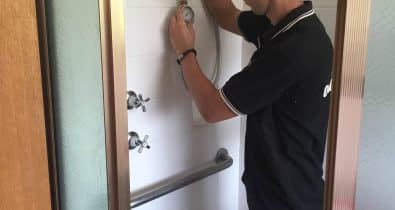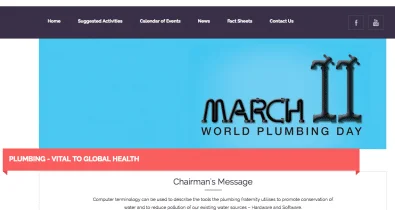Blocked stormwater pipework in Canberra is one of the easiest pieces of building infrastructure to ignore, despite it also being one of the most important.
Stormwater pipework is designed catch and divert rain water away from the building and property by carrying it through the stormwater mains and into our natural rivers where it will eventually be carried out to sea.
When stormwater pipework fails, the water can not freely escape and eventually, it will follow the path of least resistance until it can escape into the ground through a broken stormwater pipe, through an aggregate drain or it will overflow at ground level and run to the lowest point.
When stormwater is not controlled, it becomes one of the most corrosive forces on the planet. Think of the Grand Canyon and the way water has erroded this scare into the earth.
Uncontrolled water near buildings cause’s building movement.
Initially, the building movement is minor and may present by way of superficial cracks in the gyprock, external cladding or brickwork or you might notice a door is jamming and difficult to open.
After a period of time, the superficial damage will turn into structural damage which is far more serious and the building can even become unsafe. The damage can be extremely costly to fix and will almost always require an experienced builder who specialises in sinking buildings.
So, why are so many Stormwater issues left unresolved?
I believe there are three main reasons that people tend to turn a blind eye towards stormwater issues.
The first is, let’s face it, we don’t get heavy rain all that often. We only have screamingly obvious signs of blocked stormwater drain’s when it is raining cats and dogs. On the odd chance we do happen to be at home during a major down poor and take the time to look out the window to see the water flooding/overflowing, we might think to our selves, I had better do something about that. You then proceed with what you were doing, the rain stops and as life is insanely busy you don’t think about the problem again until the next time you happen to be at home looking out the window during heavy rain.
The second reason is, unless the water is actually flooding in through your back door, which happens more often than you might think, eventually the water dries out or runs away. As the damage occurs slowly and over a long period of time, many people are unaware of the damage the water is causing below the buildings footings. Most people don’t put stormwater maintenance into their annual budget and so they chose to ignore the issue.
The third reason is that often people are completely unaware of the issue all together. This is particularly the case when a the water is escaping into the earth through an aggregate drain. Aggregate drains are normally installed around a buildings perimeter and are designed to catch and divert underground into the stormwater system. Unfortunately, when you have a blocked stormwater drain downstream, the water direction reverses and instead of an aggregate drain removing the water, all of the roof water and surface water is pushed into these drains and forced to absorb into the earth in the exact place that it will cause the most damage possible.
Stormwater repairs are often not the cheapest home improvement job you can do, however doing them before damage occurs to the building can save you many thousands of dollars.
Recommended Maintenance
Ongoing maintenance is critical to a healthy stormwater system.
Ensure you keep your gutter clear and clean out your sumps as often as required. If you are not able to do this your self or are time-poor, you can speak to our friendly team who can schedule these cleans for you in a preventative maintenance plan so that you don’t even need to think about it.
Regular CCTV inspections of your stormwater pipework system are the best way to know that your system is in good condition. For freestanding residential homes, I recommend inspecting the stormwater drainage system every 5 years for buildings less than 20 years old and then every 3 years thereafter. For Commercial and multi-unit Strata Residential, I believe inspections every 3 years is the best option.
In both cases, if known damage exists more frequent inspections will likely be required.
Lastly, it is important to point out, calling a plumber to clear a blocked drain will often result in them attending to site with an electric eel or jet rodder. In both of these scenarios they are cutting out roots or blockages however, are not providing a permanent repair. We recommend always seeking advice on how the pipe can be repaired to prevent this from occurring again.





